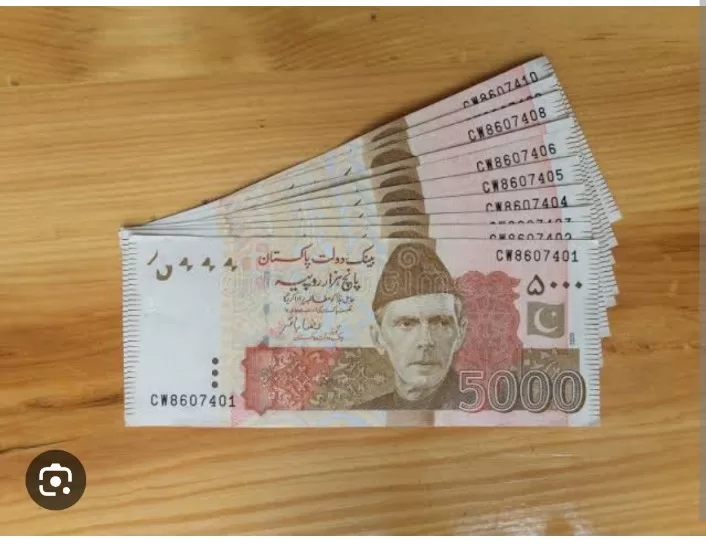Islamabad: In the recently published annual report titled “World Bank Annual Report 2023 — A New Era in Development,” the World Bank revealed that Pakistan emerged as the foremost borrower of the International Development Association (IDA) in fiscal year 2023, securing a substantial $2.3 billion in funding. The report further detailed the extensive support provided by the World Bank to Pakistan, specifically in responding to catastrophic floods. This assistance amounted to nearly $1.7 billion, directed towards five critical projects in the severely affected Sindh province. These projects aimed to fortify housing resilience, revive crop production, provide essential healthcare services for mothers and children, and bolster social protection mechanisms while enhancing the local government’s disaster response capabilities.
The World Bank’s annual report highlighted the organization’s commitment to the South Asian region, with a total lending approval of $10.1 billion across 37 operations in fiscal year 2023. This included $4.3 billion in commitments from the International Bank for Reconstruction and Development (IBRD) and $5.8 billion from the International Development Association (IDA).
The IDA, known as the world’s largest multilateral source of concessional financing, offers a spectrum of development tools, including loans, grants, and guarantees, with the primary objective of stimulating economic growth, alleviating poverty, and enhancing living conditions for the most impoverished populations globally.
The report underscored the World Bank’s extensive support through 61 advisory services and analytical products, addressing a myriad of critical issues ranging from debt management and governance to job creation, social protection, air pollution, and climate resilience.
Across the South Asian region, the World Bank concentrated its efforts on enhancing human capital resilience, effectively minimizing the impact of crises. These endeavors encompassed strategies to mitigate the consequences of a changing climate and natural disasters, coupled with the promotion of resilience in the economy, markets, and society to foster inclusive and sustainable development.
According to the report’s economic projections, South Asia’s Gross Domestic Product (GDP) is anticipated to grow by 5.6% in 2023, maintaining a moderate pace at 5.9% in 2024. This follows an initial post-pandemic rebound of 8.2% in 2021. However, the region’s growth prospects face challenges due to tightening financial conditions, limited fiscal space, and depleting reserves, contributing to substantial downside risks in many countries.
The report also highlighted the expected recovery in poverty rates in line with economic growth, with a forecasted reduction in the number of individuals living on less than $3.20 a day across the region in 2023. Nevertheless, South Asia remains profoundly susceptible to the adverse impacts of climate change and natural disasters.
Over the past two decades, climate-related disasters have affected a staggering 750 million people, over half of the region’s population. The report emphasized the disproportionate burden borne by vulnerable and marginalized communities due to high inequality, particularly in their limited capacity to recover from such disasters.
The COVID-19 pandemic left a profound mark on South Asia, resulting in a substantial setback in human capital development for millions of children and young individuals. It is anticipated that today’s students may face over a 14% decline in future earnings, while toddlers could experience a 25% reduction in earnings upon reaching adulthood.
South Asia confronts escalating challenges from intensifying heatwaves, cyclones, droughts, and floods, stemming from the changing climate. These factors, if not addressed comprehensively, could significantly deteriorate the living conditions of up to 800 million individuals in the region.
One noteworthy project highlighted in the report focuses on Punjab, a region responsible for 73% of Pakistan’s total food production. This project, valued at $200 million, advocates for the adoption of climate-smart technologies and practices to enhance water-use efficiency, fortify resilience to extreme weather conditions, and elevate the income of small-scale farmers.
Between April 2022 and June 2023, the World Bank approved a total of 529 standalone and regional operations, spanning across more than 110 countries and falling within the framework’s four pillars. The cumulative financial commitment reached an impressive $104.9 billion, comprising $53.1 billion under the IBRD and $51.8 billion under the IDA. Of this substantial allocation, $23.7 billion was dedicated to countries grappling with fragility, conflict, and violence, with an additional $2 billion allocated to small states.
The World Bank collaborates closely with countries, the private sector, civil society, and other multilateral institutions to address the diverse array of challenges and formulate enduring solutions for development. The Global Crisis Response Framework, implemented by the World Bank, has been instrumental in responding to concurrent crises, with a remarkable 322 operations approved in over 90 countries, amounting to a total of $72.8 billion in fiscal year 2023. This includes a significant contribution of $38.6 billion from the IBRD.
Under the first year of IDA20, the World Bank committed a substantial $34.2 billion to support the world’s most economically challenged countries. In response to the ongoing repercussions of the COVID-19 crisis, the World Bank accelerated financial resources in 2023, building upon the momentum established in 2022. An exceptional highlight in fiscal year 2023 was the record-high allocation of $29.4 billion dedicated to climate finance, constituting 40% of the total financing provided by the IBRD and IDA.
In summary, the World Bank’s comprehensive report illuminates its extensive engagement with Pakistan and the South Asian region, focusing on critical areas such as poverty reduction, climate resilience, and economic development. The report underscores the vital role the World Bank plays in addressing complex challenges, from natural disasters to economic recovery, and reaffirms its commitment to sustainable global development.






